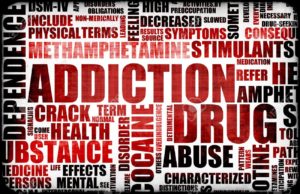A new medical study confirms what many in the Black community have known and said through anecdotal evidence and personal experience. When it comes to juvenile delinquency, the face of substance abuse is white, yet Black youths are the ones in jail, blowing out of the water the misconception that doing hard drugs is a “Black” thing.
Conducted by Northwestern Medicine, the study is the first to examine substance abuse and dependence in delinquent juveniles after detention and into young adulthood. The 12-year study followed 1,829 youth (1,172 males and 657 females, ages 10 to 18) detained at the Cook County Juvenile Temporary Detention Center in Chicago between 1995 and 1998. Researchers conducted as many as nine follow-up interviews with study participants through their 20s.
The results paint a clear picture of juvenile substance abuse, with stark differences based on race. Abuse and dependence on hard drugs such as cocaine; hallucinogens or PCP; opiates; and amphetamines are far less common among Black youth than among white. In fact, throughout the 12 years after detention, white juveniles had 30 times the odds of cocaine abuse compared to African-Americans, and Latino youths had 20 times the odds.
“Those findings are striking, considering the widely accepted stereotype of African-Americans as the most prevalent abusers of ‘hard drugs,’ ” said Linda A. Teplin, senior author of the study and Owen L. Coon Professor of Psychiatry and Behavioral Sciences at Northwestern University Feinberg School of Medicine. The study is published in the American Journal of Public Health.
“Our findings add to the growing debate on how the war on drugs has affected African-Americans,” Teplin said. “We found that African-Americans are less likely than other racial/ethnic groups to abuse hard drugs. Yet, African-Americans are disproportionately incarcerated for drug crimes.”
Teplin said the disproportionate incarceration of Black people must be addressed as a health disparity. According to the U.S. Department of Justice, for males born in 2001, one in three Blacks and one in six Latinos will be incarcerated during their lifetimes, as opposed to only one in 17 whites.
Further, the authors of the Northwestern study found that while marijuana was the most common substance use issue in young adulthood, alcohol abuse surpassed marijuana by the late 20s.
“Substance abuse is among the most serious health problems in the United States,” according to lead author Leah Welty, associate professor in preventive medicine and of psychiatry and behavioral sciences at Feinberg. “Rehabilitation and treatment services during incarceration and after would reach a sizable proportion of people in need and would address health disparities in this highly vulnerable population.”
Of the participants, 91.3 percent of males and 78.5 percent of females were diagnosed with substance dependence or abuse by their late 20s. Marijuana and alcohol abuse were more prevalent among males, while cocaine, opiate, amphetamine and sedative use disorders were more common among females.
“Unfortunately, substance use disorders were the rule, not the exception,” Welty added. “These young adults already face substantial challenges in completing education, establishing careers and building families. Substance abuse further compromises their futures.”
This report is important because of the narrative of the bad Black children, the wild “wolf packs” and “super predators” that were employed to criminalize a generation of Black people in their formative years, separate them from their families and decimate their community. During slavery, then Jim Crow, then the so-called war on drugs, when society promulgated laws to single out Black people for punishment, it was widely accepted among whites that ‘these” people had to be put in their place. Certain crimes were created solely for Blacks, and criminals were manufactured based on racial stereotypes and scapegoating. Scientific studies were unnecessary to single out a group and inflict policies of mass arrest and incarceration, even genocide, against them. After all, no one required data to know that Black people had a bulls-eye on their heads.
The police and the courts monitored the Black community and threw the book at us, even as drugs ran rampant in white America, in suburbia and in the corporate board rooms and suites. However, now that white people are dying from a drug abuse crisis — as people of color continue to fill the prisons — the war on drugs is transitioning into a kinder, gentler affair. Suddenly this is a public health issue and not a criminal justice matter.



